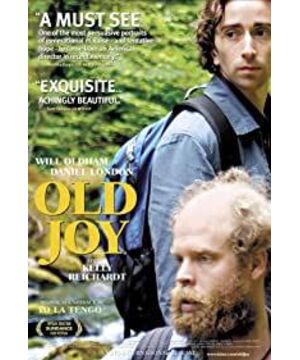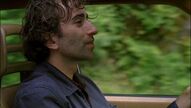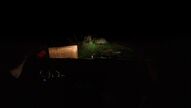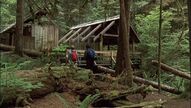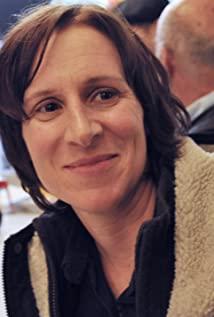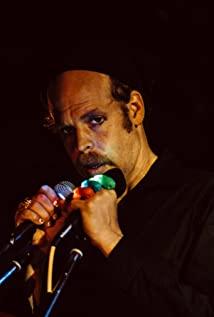When Kelly Reichardt read Jonathan Raymond's short story "Old Joy," she immediately wanted to make it into a movie and thought she could do it . It's a story about two old friends who reunite and go camping in the Oregon woods for the weekend. Many places in the novel are very attractive to her. The film has a small cast, a small crew, a tight shooting schedule, and a special and remote location (an old-growth forest in Oregon). As a result, she produced a small but infectious film, Old Joy (2006).
All the film's needs are within Reichardt's grasp: two main actors, a car, a dog, and the wilderness on the Pacific coast of the American Northwest. Her six-person crew is only one more than Rodriguez's, because she uses a simultaneous voice and requires one person to set up the mics and recordings in the scene.
She also brought in Peter Sillen, a photographer with extensive experience shooting documentaries. This is a "refined" work by experts using natural light. True to the spirit of the original, she led her small crew and cast to Oregon, at a friend's house in the woods, on a church grounds in Oregon. The shooting took only 10 days. She only had two lights, and only used them in two scenes, and the rest of the scene was a beautiful old Oregon forest under the clouds. The texture of the location and natural light makes her low-budget work look like a million-dollar production. Birds, rivers, rain, leaves all seem to become other characters in the film.
Small productions allowed the cast and production crew to be adaptable and able to work normally in rough or flat areas with local showers, weather conditions common in Oregon. However, turning a disadvantage into an advantage under restricted working conditions requires close cooperation among team members. As Reichardt said, "Everyone on the film crew, including the actors, was carrying equipment back and forth on the trail. Once it rained, everyone was huddled in the car, reading lines, rehearsing, and discussing the film until the rain stopped." .
This intense working relationship creates a strong dynamic of collaboration between the cast and crew, inspiring everyone to contribute to the film. “We worked together to be in a special place, to experience an amazing experience together, and I knew it would turn out well. These discussions deepened everyone’s understanding of the script and sparked powerful impromptu exchanges between us, which culminated in in the film.” In addition, the story of the film itself, like the relationship between the two men, is subtle and delicate. There's a lot of potential that the film doesn't express directly. It is the perfect atmosphere created by Reichardt's meticulous, small-scale production that makes the mood all the more captivating. "I think the way our relationship was made came from the film itself. All the constraints also turned out to be favorable, although I was also a little skeptical at times that they would eventually materialize."
The aesthetic features and conception techniques embodied in the film "Old Dreams" are a necessary response to the problem of limited production resources in reality. Yet its style blends beautifully into the story without feeling the slightest deliberate frugality or sacrifice in film quality. The film's story and resources fit so well that we couldn't imagine an alternative production method that would have achieved this effect.
The content of this article is excerpted from the book "Complete Handbook of Feature Film Creation" published by Houlang Film Academy. All rights reserved. Reprint Contact
View more about Old Joy reviews


